Vertical Cross Sections
In previous chapters we saw hurricane Alex move through the tropical and transformation phase. In the third phase Hurricane Alex re-intensifies and becomes a vigorous extra tropical depression.
Vertical Cross Sections (VCS) through Hurricane Alex
In this chapter vertical cross sections through Hurricane Alex, the first phase of the storm.
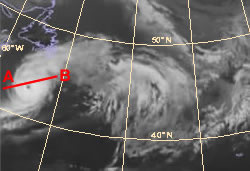
|
5 Aug 2004: 18UTC |
Vertical Cross Sections (VCS) through Transition
In this chapter vertical cross sections through Transition, the second phase of the storm.
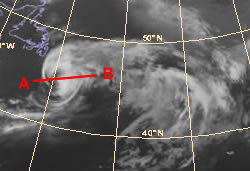
|
6 Aug 2004: 00UTC |
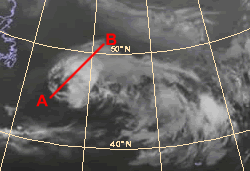
|
6 Aug 2004: 06UTC |
Vertical Cross Sections (VCS) through the Frontal system (Re-Intensification)
In this chapter vertical cross sections through Re-Intensification, the third and final phase of the storm.
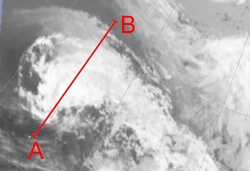
|
6 Aug 2004: 12UTC |
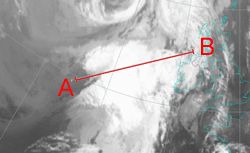
|
7 Aug 2004: 06UTC |
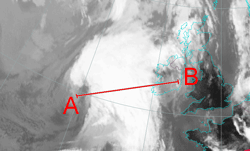
|
7 Aug 2004: 12UTC |
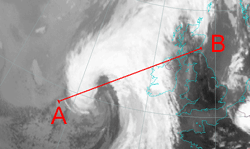 |
7 Aug 2004: 18UTC |
Vertical Cross Sections (VCS) for a sequence of PV with Isotachs.
Using a PV perspective for the case diagnosis and static PV inversions, it was found that the factors necessary for the re-intensification of the remnant tropical system were (a) the presence of a strong upper-level dry positive PV anomaly and warm, moist low-level diabatically generated PV anomaly and (b) an interaction between the two PV anomalies such that they underwent mutual intensification for an extended period of time. The interaction between anomalies was shown to occur when the upper-level PV anomaly wrapped about the lower-level PV anomaly in a cyclonic fashion while
maintaining a horizontal separation of about 700 km during the re-intensification period, which is consistent with the phase-locking theory of Hoskins et al. (1985).
Summary of the investigations in this chapter
The use of vertical cross sections makes the vertical structure of the PV-anomaly very clear. In time we detected a downward protrusion of stratospheric air. As the cyclogenesis process goes on, a PV anomaly can also be seen in the lower levels. The two anomalies seems to interact and giving reason to the strong development.